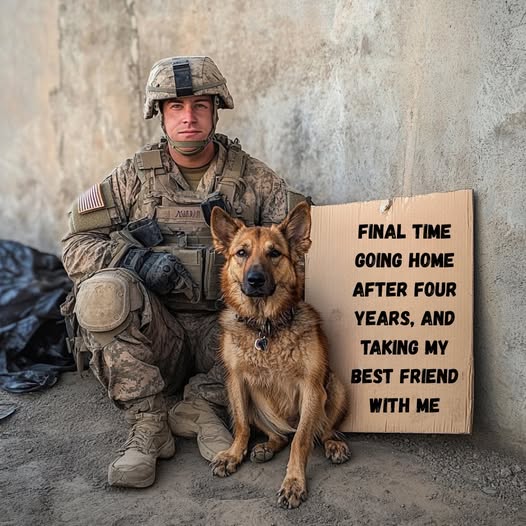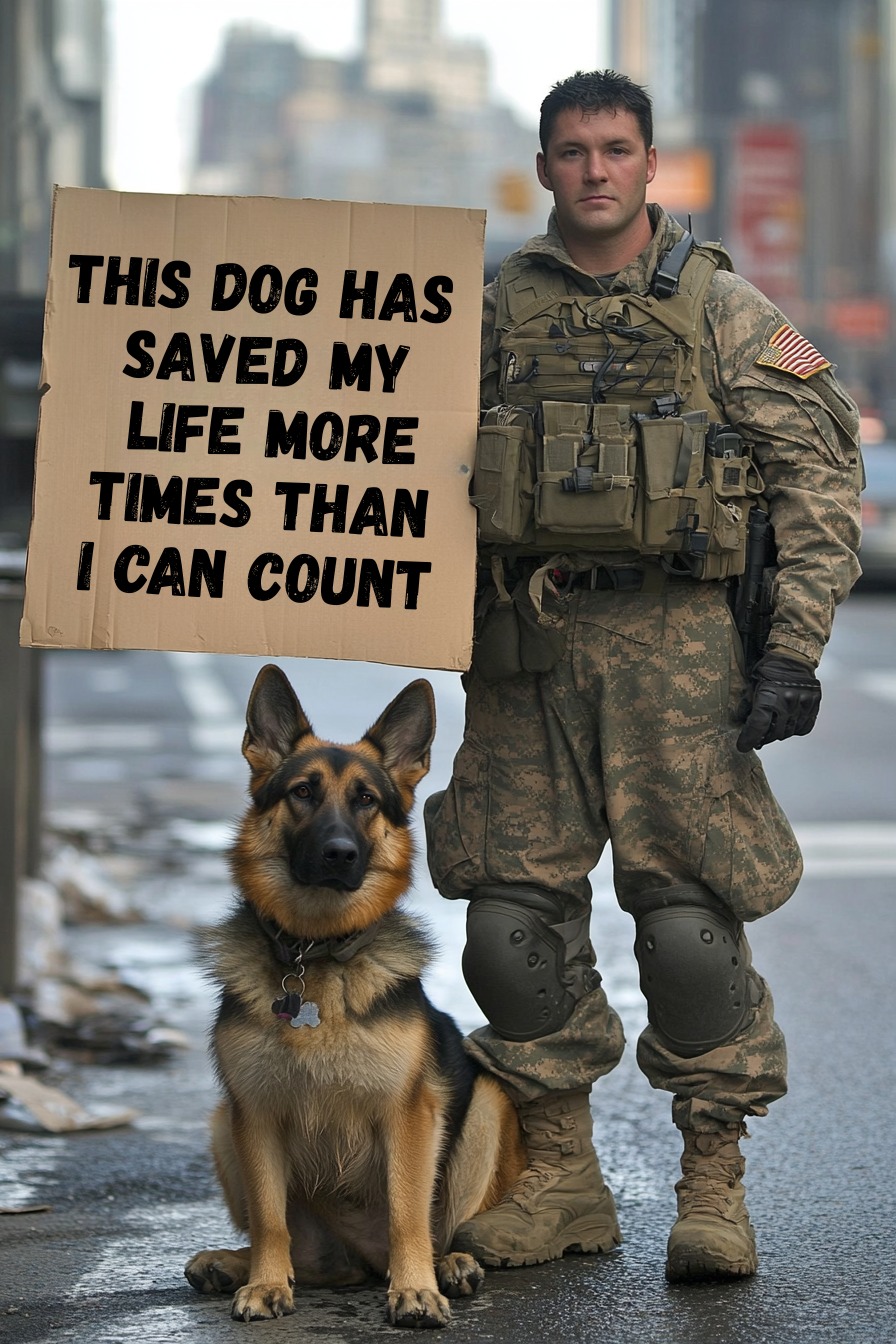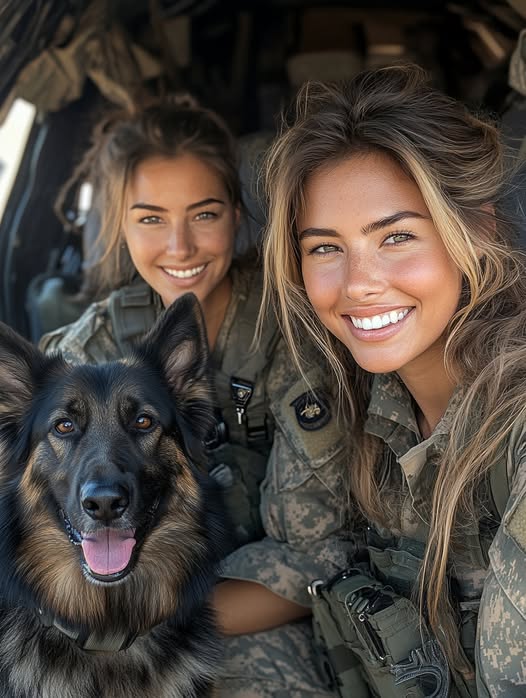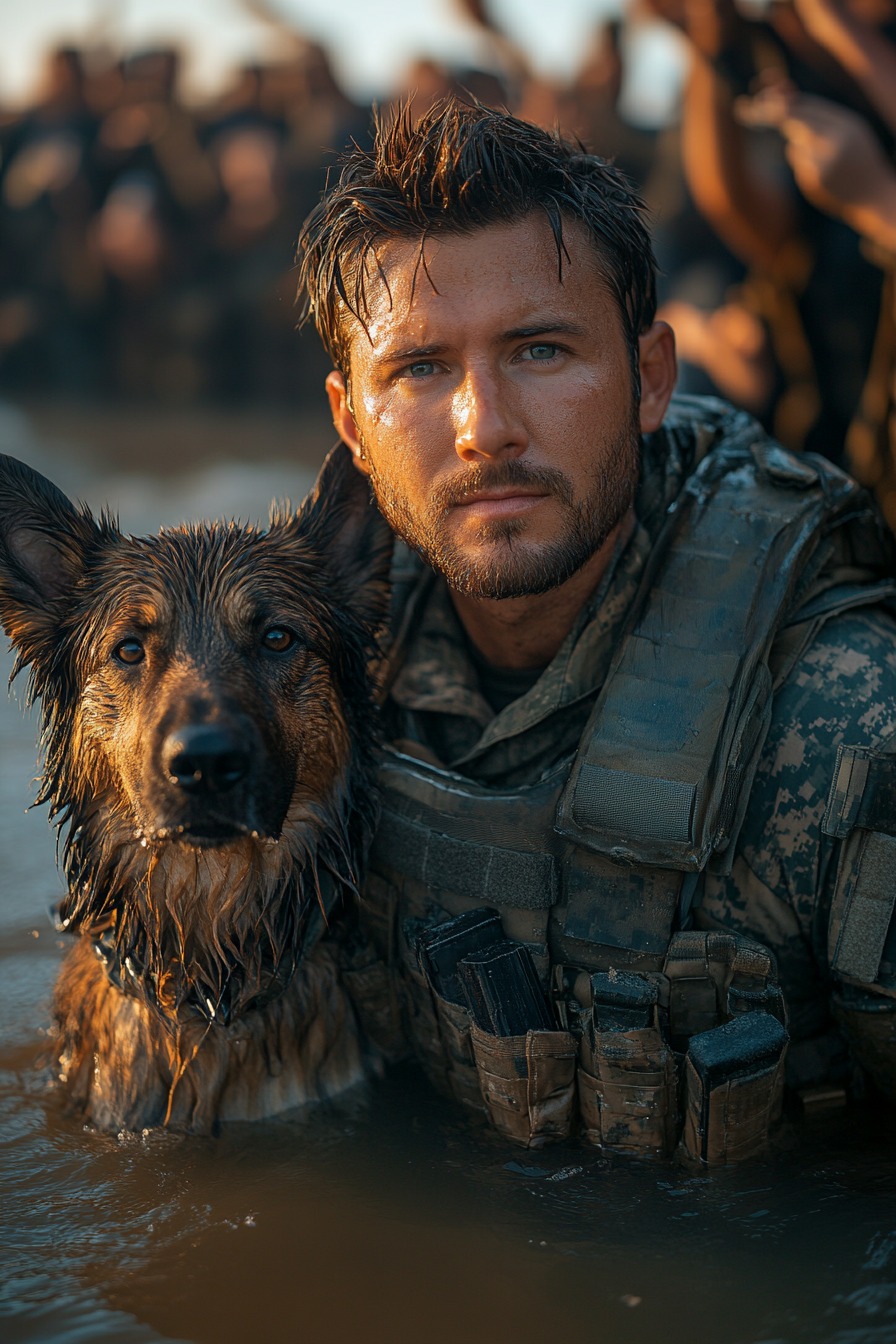From War Zones to Classrooms: How K9 Bear Became a Therapy Dog After 7 Tours in Afghanistan
K9 Bear wasn’t just a military working dog — he was a legend in his unit. With seven tours in Afghanistan under his belt, Bear had walked ahead of troops on more than 50 dangerous missions, sniffing out hidden IEDs before they could take lives. The massive black Labrador had an uncanny instinct, detecting even the most well-concealed explosives. Soldiers swore they owed their lives to him. Some carried his photo in their pockets. But when Bear’s final deployment ended, and his career as a detection dog was over, no one expected his next mission to be just as vital — though far more silent.
Retirement didn’t sit easy with Bear. He seemed restless, pacing during storms and whining when sirens wailed. His handler, Staff Sergeant Rachel McIntyre, had seen too many dogs fade into depression once the adrenaline and structure of the battlefield vanished. She was determined not to let that happen to Bear. When an old friend invited her to visit a school for children of deployed soldiers, she brought Bear along. What happened that day changed everything. As soon as Bear entered the building, anxious children visibly relaxed. One boy with separation anxiety clung to Bear, his first smile in weeks appearing as Bear rested his giant head on his lap.
The school counselor noticed. So did the principal. It turned out that Bear’s presence — his calm, watchful demeanor and the way he instinctively approached children in distress — made him a natural therapy dog. Rachel enrolled him in a certification program, and within months, Bear was a full-time member of the school staff. He began working with students dealing with the emotional toll of having parents deployed overseas or suffering from PTSD. His quiet strength became a daily source of comfort. Kids who had once refused to speak in group sessions began opening up, simply because Bear was in the room.
Each morning, Bear would walk the hallways, stopping at classrooms where he sensed tension. He would sit beside a child crying after a difficult phone call with a parent overseas. He’d nudge a trembling hand during fire drills. Teachers said Bear could sense anxiety before any adult noticed it. The dog who once sniffed out bombs was now detecting invisible emotional wounds — and disarming them with a gentle paw. For Bear, the classroom became a new battlefield, and his mission was no less heroic than what he had done in Afghanistan.
Now older and slower, Bear still visits the school every week, even in semi-retirement. He’s become a beloved figure, a living reminder of courage, healing, and purpose. His story — from the chaos of warzones to the quiet resilience of children left behind — continues to inspire veterans, students, and dog lovers alike. For Bear, there were no medals in this second chapter, only something far greater: the chance to keep saving lives, one small heart at a time.







